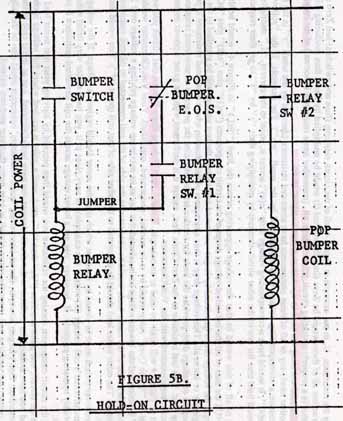
Coils are the devices that cause all the movement on a pinball game. These coils are found in either relays (control devices) or solenoids (action devices). Many of these coils are controlled by simple switch circuits. Quite often it is simply a matter of a single switch on the playfield. There are times when a switch may need to turn on some things while at the same time turning off some other things. A device called a relay is employed to do this. A relay consists of a "magnet coil" with a solid iron core, a hinged metal plate called an armature, and a set of electrical switch contacts arranged in a stack. When current is applied to the coil the core is magnetized, attracting the metal armature to it.

Attached to the armature is an "actuator" made of an insulating material. Certain blades of the switches are inserted into slots on the actuator. As the armature is pulled in and subsequently released, switches are turned on and off. As you can see in the sketch above, before the armature is pulled in the top switch is "on" or "normally closed" (NC). The middle switch is "off" or "normally open" (NO). The top part of the "single pole-double throw" switch at the bottom is "on" (NC) while the bottom part is "off" (NO).
If a switch is activated to turn on the relay coil, the actuator is pulled down and all switches are "flipped" to the opposite state. That is, the top switch in the stack will open, the middle will close and the SPDT switches are off on top, on on the bottom.
An example of a relay application is shown in the sketch below. This is called a "hold on" circuit. Here's the sequence that occurs:

The purpose for this "hold on" is to assure that the function actually occurs. In this instance the pop bumper would activate, but it might not be pulled all the way down, resulting in a weaker kick of the ball.
Sometimes a relay should "hold on" until a scoring sequence has completed. Relays provide assurance that an event happens or provide timing for other events to happen.